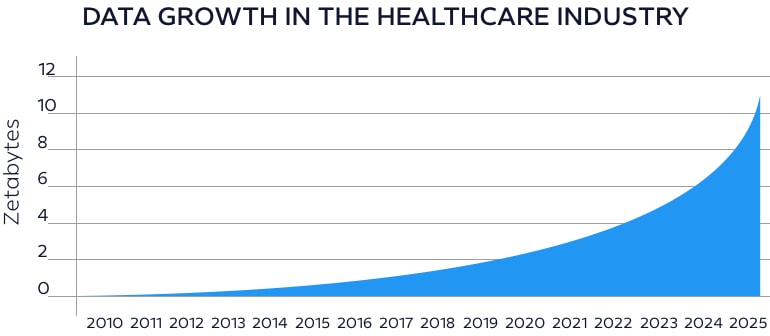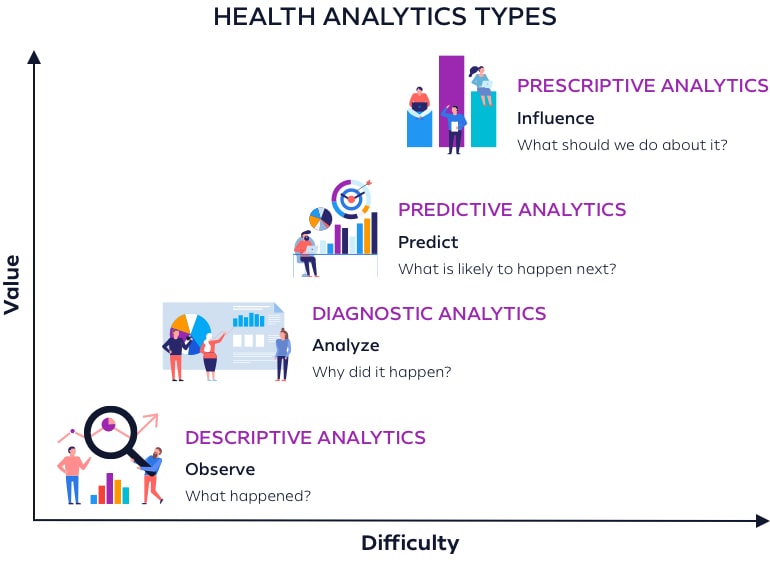What is All the Hype about Big Data in 2021?
In 2020, many companies have already realized that they need to work with all the data that enters their system and that they can use it to pinpoint areas of inefficiency or even loss. Based on this information, in 2021, businesses will continue using Big Data for identifying opportunities, creating smarter strategies and gaining higher profits.
At the same time, the application of big data can lead to the following advantages:
- Storing large amounts of data is less expensive when using big data technologies;
- Measuring customer satisfaction through analytics is easier;
- Having the possibility to create well-thought-out products and services based on the stored data;
- Building flexibility with decision making;
- Increasing the security level and reducing fraud as data can report any suspicious activity.
Big Data Analytics in Healthcare
Worldwide the healthcare system is overloaded and the demand for medical help is on the rise. In 2021, more than ever, there is a need to cut costs and increase profits. In this case, professionals can use Big Data to predict epidemics, prevent diseases and avoid medical misdiagnosis.
Meanwhile, we shouldn’t neglect the fact that the healthcare industry operates with large sets of varied data. The data for one patient might include electronic health record data, physician records, prescriptions, or even information regarding lab tests. Nevertheless, having the data can’t help us excel if we don’t know how to read and summarize it. This is where analytical techniques come in. Healthcare analytics can give us answers to the most complex questions based on the data that we possess. Healthcare relies on the following four types of analytics:




